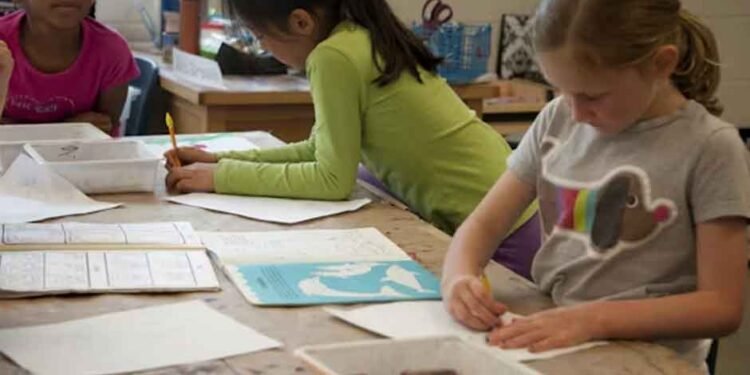Choosing the right educational path for your child ranks among the most significant decisions parents face. In a city renowned for its world-class education system, Singapore offers an impressive array of schooling options that cater to diverse learning styles, cultural backgrounds, and family aspirations. The choices can feel overwhelming, from those crucial early years that shape fundamental learning attitudes to the transition into more structured academic environments that prepare children for global opportunities.
The educational journey doesn’t begin when a child enters primary school—it starts much earlier. Research consistently demonstrates that the foundation laid during the preschool years significantly influences a child’s future academic success, social development, and lifelong attitude toward learning. Understanding this continuum, from early childhood programs through to more advanced educational settings, helps parents make informed decisions that align with their child’s unique needs and their family’s long-term vision.
The Critical Foundation: Early Childhood Education That Makes a Difference
The preschool years represent a golden window for cognitive, social, and emotional development. During this period, children develop essential skills that extend far beyond recognizing letters and numbers. They learn how to interact with peers, manage emotions, approach problems with curiosity, and build the confidence needed to embrace new challenges. The quality of early childhood education can quite literally reshape neural pathways and establish patterns that persist throughout life.
When evaluating preschool options, parents should look beyond colorful classrooms and cheerful atmospheres. The most effective early learning environments integrate play-based learning with structured activities, recognizing that young children learn best through hands-on exploration and discovery. A quality preschool fosters language development through rich conversations, builds mathematical thinking through everyday activities like sorting and counting, and encourages scientific inquiry by letting children experiment and observe the world around them.
The physical environment matters tremendously. Thoughtfully designed learning spaces with age-appropriate materials, safe outdoor areas for gross motor development, and cozy corners for quiet activities all contribute to holistic development. However, the real magic happens through the interactions children have with skilled educators who understand child development and know how to nurture each child’s individual strengths while gently supporting areas that need growth.
Singapore offers numerous outstanding early childhood centers, each with its own philosophy and approach. Among these,Little Oxford Schoolhouse has built a reputation for providing nurturing, developmentally appropriate programs that emphasize both academic readiness and social-emotional growth. Their approach recognizes that preparing children for future academic success requires building strong foundational skills while ensuring they feel confident, capable, and genuinely excited about learning.
Parents should visit multiple preschools, observe classroom interactions, and ask detailed questions about curriculum, teacher qualifications, student-teacher ratios, and how the program addresses individual learning differences. Pay attention to how teachers engage with children—do they listen attentively? Do they ask open-ended questions that encourage thinking? Do they create an atmosphere where mistakes are viewed as learning opportunities rather than failures?
Navigating the Transition: Preparing for More Structured Learning
As children progress beyond the preschool years, they encounter increasingly structured academic environments with higher expectations for independence, focus, and academic performance. This transition represents a pivotal moment that can shape a child’s long-term relationship with school and learning. Parents who understand this transitional period can better support their children through what can sometimes be a challenging adjustment.
The shift from play-based learning to more formal academics doesn’t happen overnight, nor should it. The most successful transitions occur when schools create bridge programs that gradually introduce more structure while maintaining the hands-on, engaging elements that make learning enjoyable for young children. During this period, children develop crucial executive function skills—the mental processes that help them plan, focus attention, remember instructions, and juggle multiple tasks successfully.
Social dynamics become increasingly complex during these years as well. Children begin forming deeper friendships, navigating more sophisticated social situations, and developing their sense of identity within peer groups. Schools that prioritize social-emotional learning alongside academic achievement help children build resilience, empathy, and effective communication skills that serve them throughout life.
Parents can support this transition by maintaining consistent routines at home, creating dedicated spaces for homework and reading, and staying actively engaged with their child’s school experience without becoming helicopter parents. Regular communication with teachers, attending school events, and showing genuine interest in what children are learning reinforces the message that education matters and that challenges are opportunities for growth rather than insurmountable obstacles.
Exploring International Education: Global Perspectives and Opportunities
As children mature and academic demands increase, many families begin considering educational options that offer international curricula, diverse cultural environments, and pathways to global universities. Singapore’s status as an international hub makes it home to an impressive concentration of schools offering various international programs, each with distinct characteristics, pedagogical approaches, and philosophical foundations.
The appeal of international education extends beyond simply offering instruction in English or following a non-local curriculum. These institutions typically embrace diversity as a core strength, bringing together students from dozens of countries and creating truly multicultural learning communities. In these environments, children develop cultural intelligence—the ability to work effectively across cultural boundaries—which has become an increasingly valuable skill in our interconnected world.
International schools in Singapore offer various curriculum options, including the International Baccalaureate (IB), British curriculum (IGCSE and A-Levels), American system, and others. Each approach has its merits, and the best choice depends on factors including a child’s learning style, the family’s future plans, and the desired university pathway. The IB program, for instance, emphasizes critical thinking, research skills, and a holistic approach to education, while British and American systems offer their own distinct advantages in terms of depth, breadth, and assessment methods.
Beyond curriculum, international schools typically offer extensive co-curricular programs covering sports, arts, technology, and service learning. These activities aren’t mere add-ons—they’re integral to developing well-rounded individuals with diverse interests and skills. Through participation in Model United Nations, robotics clubs, music ensembles, athletic teams, and community service projects, students discover passions, develop leadership abilities, and build the kind of comprehensive profile that selective universities seek.
The teaching staff at quality international schools typically includes educators from around the globe who bring diverse perspectives and expertise. Many hold advanced degrees and specialized qualifications, and they’re often drawn to international education specifically because they’re passionate about working in culturally diverse, globally minded environments. This expertise translates into sophisticated, engaging instruction that challenges students to think critically and see issues from multiple perspectives.
Class sizes and student support services represent another important consideration. Smaller class sizes enable more individualized attention, while comprehensive support services—including learning support specialists, college counselors, and mental health professionals—ensure that students receive the assistance they need to thrive academically and personally.
Making the Decision: Factors Beyond Curriculum and Credentials
While curriculum and academic reputation certainly matter, several other crucial factors should influence school selection decisions. Location and logistics significantly impact daily life—a school with an excellent program becomes less attractive if the commute causes chronic stress and reduces family time. Consider transportation options, arrival and dismissal procedures, and how the school’s schedule aligns with your family’s needs.
Financial considerations extend beyond tuition fees. International schools typically charge separate fees for enrollment, facilities, technology, and various activities. Some families find that the total cost of international education represents a substantial portion of their budget, requiring careful financial planning or consideration of scholarship opportunities. However, many families view this as an investment in their child’s future that pays dividends through the opportunities, experiences, and global perspectives their children gain.
The school community and values alignment shouldn’t be overlooked either. Schools develop distinct cultures that reflect their educational philosophy, community composition, and leadership approach. Some emphasize academic rigor above all else, while others prioritize balance between academics, arts, athletics, and personal development. Visit schools during normal hours, speak with current parents, and attend open houses to get a genuine sense of whether a school’s culture resonates with your family’s values.
Consider your child’s personality and learning needs as well. An academically gifted child might thrive in a pressure-cooker environment that pushes them to excel, or they might flourish better in a supportive setting that allows them to explore interests without constant competition. Children with learning differences require schools with robust support services and teachers trained in differentiated instruction. Athletic or artistically talented children benefit from schools that offer serious programs in their area of passion.
Think about the long-term trajectory too. If your family might relocate internationally, choosing a school with a widely recognized curriculum (like IB) can ease future transitions. If you’re planning to remain in Singapore through university, consider how various school credentials are viewed by universities in countries where your child might apply. Some families maintain connections to their home country’s education system while benefiting from Singapore’s international options, creating a hybrid approach that honors their heritage while embracing global opportunities.
The peer environment plays an enormous role in adolescent development. Schools with engaged student bodies, positive peer cultures, and effective anti-bullying policies create environments where children feel safe to be themselves, take academic risks, and build meaningful friendships. Speak with students if possible, observe interactions during visits, and ask about how schools handle social challenges and promote inclusive communities.
Final Words
Singapore’s educational landscape offers remarkable opportunities for families seeking quality education, whether through local institutions emphasizing academic excellence, early childhood centers focused on developmental appropriateness, or international schools providing global perspectives and curricula. The abundance of choice, while sometimes overwhelming, allows families to find environments that truly align with their child’s needs and their family’s aspirations.
The most successful educational journeys begin with thoughtful consideration of your child as an individual—their learning style, interests, strengths, and needs—rather than simply selecting the school with the highest reputation or the most impressive facilities. They continue with active parental engagement that balances support with independence, and they’re sustained by realistic expectations coupled with genuine celebration of growth and learning.
Take time to research options thoroughly, visit schools, ask substantive questions, and trust your instincts. The “best” school isn’t an abstract concept—it’s the one where your specific child will thrive academically, socially, and emotionally. By approaching these decisions with care, staying flexible as your child’s needs evolve, and maintaining focus on the bigger picture of raising capable, compassionate, curious individuals, you’ll navigate Singapore’s educational options successfully and set your child on a path toward a bright, fulfilling future.












